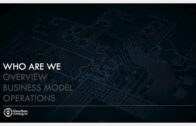Harnessing Deepfake Technology for Good: A Message to Young African Inventors and Beyond
MEMBERS & VISITORS:
Harnessing Deepfake Technology for Good: A Message to Young African Inventors and Beyond
“Hello, everyone! Welcome back to our channel. Today’s topic is both fascinating and critical – deepfake technology. You’ve probably heard about deepfakes in the news, often linked to misinformation or unethical use. But as young inventors, particularly in Africa, it’s important to understand the full spectrum of this technology – its dangers, but also its potential for good.”
“Let’s start with the basics. Deepfakes are essentially hyper-realistic digital manipulations, where AI and machine learning are used to make people appear to say or do things they never did. This technology is advancing rapidly, much faster than the laws designed to regulate it. We’re in a kind of ‘wild west’ phase, where lawmakers are scrambling to understand and regulate these technologies.”
“In places like China, the government has already started regulating deepfakes, requiring that all deepfake content be clearly marked as modified. The European Union, through its ambitious AI Act, is also working on similar regulations. Even the UK is stepping up, particularly targeting non-consensual deepfake pornography, which, unfortunately, forms a large part of deepfake misuse.”
“But regulation is complex. In democracies, there’s a fine line between regulation and the infringement of rights and freedoms. Tech companies, like YouTube, are also grappling with this. They promise to remove deepfakes that pose a ‘serious risk of harm,’ but the challenge lies in defining what constitutes this harm.”
“Now, here’s where it gets interesting for us as inventors. One promising solution is to develop counter-technology – software that can detect the subtle quirks of deepfakes, like unnatural blinking or other details that escape the human eye. This is an area ripe for innovation, especially for young tech enthusiasts and inventors in Africa.”
“But why should we, as young African inventors, care? Deepfakes represent a new chapter in how humans consume and relate to information. They’re as significant as the invention of photography or the moving image. These technologies were once the bedrock of evidence and truth but are now veering towards deception and confusion.”
“As inventors, we have the power to steer this technology towards positive uses. Imagine using deepfake technology for historical reenactments, educational purposes, or even to preserve languages and cultures. The potential is immense, but so is the responsibility.”
“So, my message to you is this: Be aware of the dangers of deepfakes, but also be bold in exploring their positive applications. Educate yourselves on AI and machine learning. Innovate with ethics at the forefront. Engage with your communities to understand their needs. And most importantly, always question and verify the media you consume and create.”
“We are at a crossroads where technology can be used for great harm or great good. Let’s choose the path of innovation for the benefit of humanity, and Africa in particular. Let’s be the inventors who use deepfake technology to tell our stories, preserve our history, and build a brighter future.”
“Thank you for tuning in. Keep questioning, keep learning, and keep inventing. Together, we can make a real difference!”
DEEP FAKE (SWAHILI)
We have published other informative posts on Invention School’s website which may interest you. To view our entire catalog of over 900 posts go to inventionschool.tech/category/blog/ or use our handy search tool to find topics of interest to you.
Mechanical/Solar Engineer, Prof. Oku Singer
(9)






